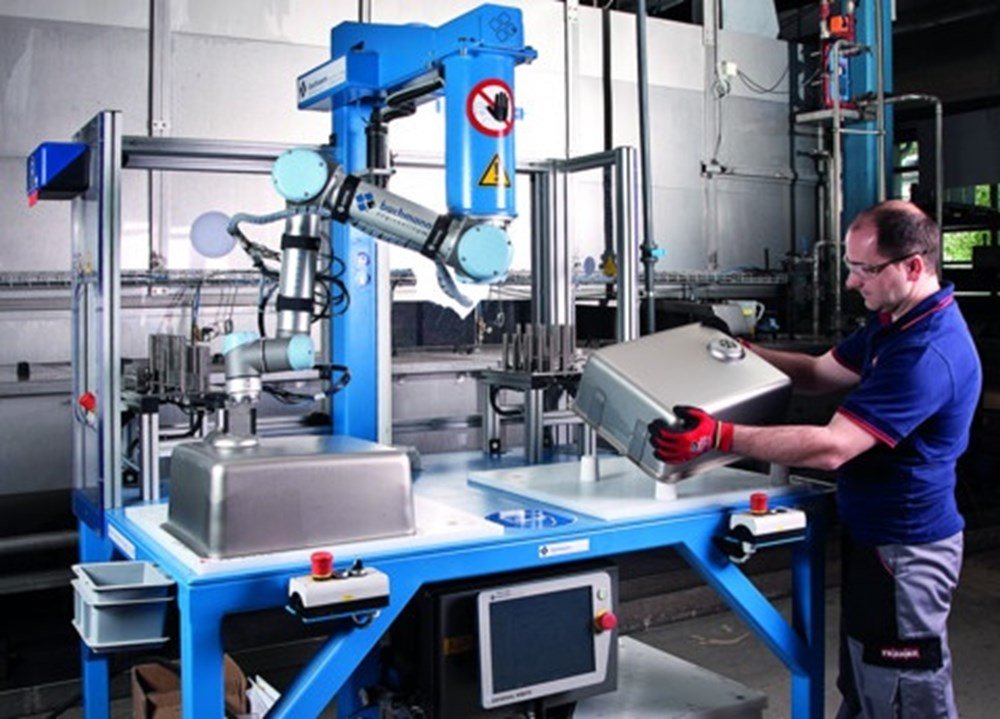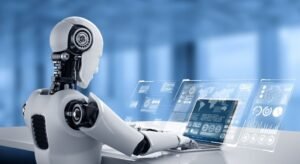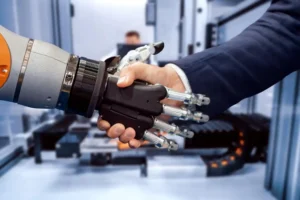Robotics has emerged as a key driver of transformation in modern industries, revolutionizing the way businesses operate across the globe. From manufacturing to healthcare, logistics to agriculture, robotics is enhancing productivity, efficiency, and safety while reducing costs and human labor. As industries continue to embrace automation, robots are not just changing the way products are made—they are reshaping entire industries.
In this article, we will explore how robotics is transforming industries, its benefits, challenges, and the future of robotics in the global economy.
The Rise of Robotics in Modern Industries
Robots have been around for several decades, but it is only in recent years that they have gained widespread adoption across a variety of sectors. The integration of Artificial Intelligence (AI), Machine Learning (ML), and advanced sensors has made robots smarter and more adaptable, allowing them to take on increasingly complex tasks. Additionally, innovations in robotic design, affordable sensors, and cloud computing have made robotics more accessible to businesses of all sizes.
The impact of robotics spans multiple industries, and its use is growing exponentially. In fact, the global robotics market is expected to reach nearly $90 billion by 2025, according to market reports.
1. Manufacturing and Production
Transforming Production Lines
Manufacturing has been the primary industry benefiting from robotics for decades. Robots have revolutionized the production line, enabling manufacturers to produce products faster, more accurately, and at lower costs.
-
Automated Assembly: Robots are increasingly taking over repetitive and labor-intensive tasks such as assembly, painting, welding, and packaging. This allows workers to focus on more complex and creative aspects of production.
-
Precision and Quality Control: Robots equipped with advanced sensors and vision systems can detect defects in products and ensure precise assembly, improving overall product quality and reducing errors.
-
Cost Efficiency: Robots reduce the need for human labor, lower production costs, and allow businesses to scale operations without increasing the workforce.
Key Examples:
-
Automotive Manufacturing: Companies like Tesla, BMW, and Toyota use robotic arms for welding, assembling, and painting car parts, which increases production speed and reduces human error.
-
Electronics Assembly: Robotics is extensively used in assembling small electronic devices like smartphones and computers, improving speed and reducing defects.
2. Logistics and Supply Chain
Automation in Warehousing and Distribution
The logistics and supply chain sector has embraced robotics to streamline inventory management, order fulfillment, and last-mile delivery. Robotics has the potential to greatly reduce the time it takes to move goods from warehouses to consumers.
-
Automated Storage and Retrieval: Robots are used to move and store items in warehouses, enhancing efficiency and reducing the risk of injury from manual lifting.
-
Autonomous Mobile Robots (AMRs): These robots are used to transport goods within warehouses, increasing the speed of order picking and reducing human labor.
-
Drones for Last-Mile Delivery: Companies like Amazon are using drones to deliver packages directly to consumers, bypassing traditional delivery vehicles and reducing delivery time.
Key Examples:
-
Amazon Robotics: Amazon’s use of robots in their fulfillment centers has dramatically increased the efficiency of inventory management and product shipping, with robots helping to move products across the warehouse.
-
Ocado: The British grocery delivery service uses robots to automate its warehouses, making the process faster and more efficient.
3. Healthcare and Medicine
Revolutionizing Healthcare Delivery
In healthcare, robotics is transforming everything from surgery and rehabilitation to hospital management and patient care. Robots are enabling more precise, less invasive procedures while improving patient outcomes.
-
Surgical Robots: Robotic-assisted surgery systems, like da Vinci, allow surgeons to perform highly precise and minimally invasive procedures, leading to faster recovery times and fewer complications.
-
Exoskeletons for Rehabilitation: Robotic exoskeletons are being used to assist patients with mobility impairments. These devices help people with spinal cord injuries or neurological conditions regain the ability to walk.
-
Robotic Assistants: In elderly care, robots are increasingly being used as assistants to provide support with daily activities, monitor health conditions, and even offer companionship.
Key Examples:
-
da Vinci Surgical System: This robotic system allows surgeons to perform minimally invasive surgeries with high precision, improving recovery times and reducing the risk of human error.
-
Robot-Assisted Physical Therapy: Devices like ReWalk help patients with mobility issues regain movement, providing improved rehabilitation outcomes.
4. Agriculture
Enhancing Efficiency in Farming
Agriculture is another sector where robotics is making a huge impact. From planting and harvesting to monitoring crops, robots are revolutionizing how farms operate, increasing crop yields and reducing the need for labor.
-
Autonomous Tractors: Self-driving tractors can plow fields, plant seeds, and perform other tasks without human intervention, reducing the need for manual labor and increasing farming efficiency.
-
Precision Agriculture: Robots equipped with sensors and cameras can monitor soil conditions, detect pests, and provide data to optimize the use of water, fertilizer, and pesticides, minimizing waste and improving crop yields.
-
Harvesting Robots: Robots are now capable of picking delicate crops like strawberries and tomatoes, which requires precision and speed.
Key Examples:
-
RoboCrop: This system uses a fleet of autonomous robots to weed, monitor, and harvest crops with precision.
-
FFRobotics: This robot is designed to autonomously pick fruits such as apples, improving harvesting efficiency and reducing labor costs.
5. Construction
Revolutionizing Building Projects
The construction industry is increasingly adopting robotics to automate labor-intensive tasks such as bricklaying, welding, and 3D printing. Robots are not only helping speed up construction projects but also improving precision and safety.
-
3D Printing in Construction: Large-scale 3D printers are being used to create components of buildings, including walls, floors, and structural elements. This method of construction allows for more intricate designs and reduces material waste.
-
Robotic Bricklaying: Robots like SAM100 can lay bricks faster than human workers, improving the speed of construction projects and reducing labor costs.
-
Drones for Site Surveys: Drones are being used to survey construction sites, providing real-time data and helping to ensure that projects are on track.
Key Examples:
-
ICON’s 3D-Printed Homes: ICON uses 3D printing technology to create affordable, sustainable homes, offering a glimpse into the future of construction.
-
SAM100: This robotic bricklayer can lay thousands of bricks in a day, significantly accelerating the construction process.
Challenges and Future of Robotics in Industry
While robotics has already transformed many industries, there are still challenges to overcome:
-
High Initial Investment: The cost of implementing robotic systems can be high, which may be a barrier for smaller companies.
-
Integration with Existing Systems: Adapting robotic systems to existing infrastructure and workflows can require significant effort and investment.
-
Workforce Displacement: The increased use of robots raises concerns about job displacement, particularly in industries with high manual labor requirements.
However, the future of robotics in industry looks promising. As technology advances, robots are becoming more affordable, versatile, and integrated into complex workflows. Companies that embrace automation will be well-positioned to remain competitive in the global market.
Conclusion
Robotics is transforming industries across the globe by improving efficiency, productivity, and safety while reducing costs. From manufacturing to healthcare, agriculture to construction, robots are reshaping how work is done, allowing businesses to optimize operations and innovate. As technology continues to evolve, the potential for robotics to revolutionize industries is limitless.
For engineers, business owners, and innovators, understanding the role of robotics in modern industries is essential to staying ahead of the curve. Whether you are looking to automate tasks, increase efficiency, or improve precision, integrating robotics into your operations will undoubtedly be a game-changer.



